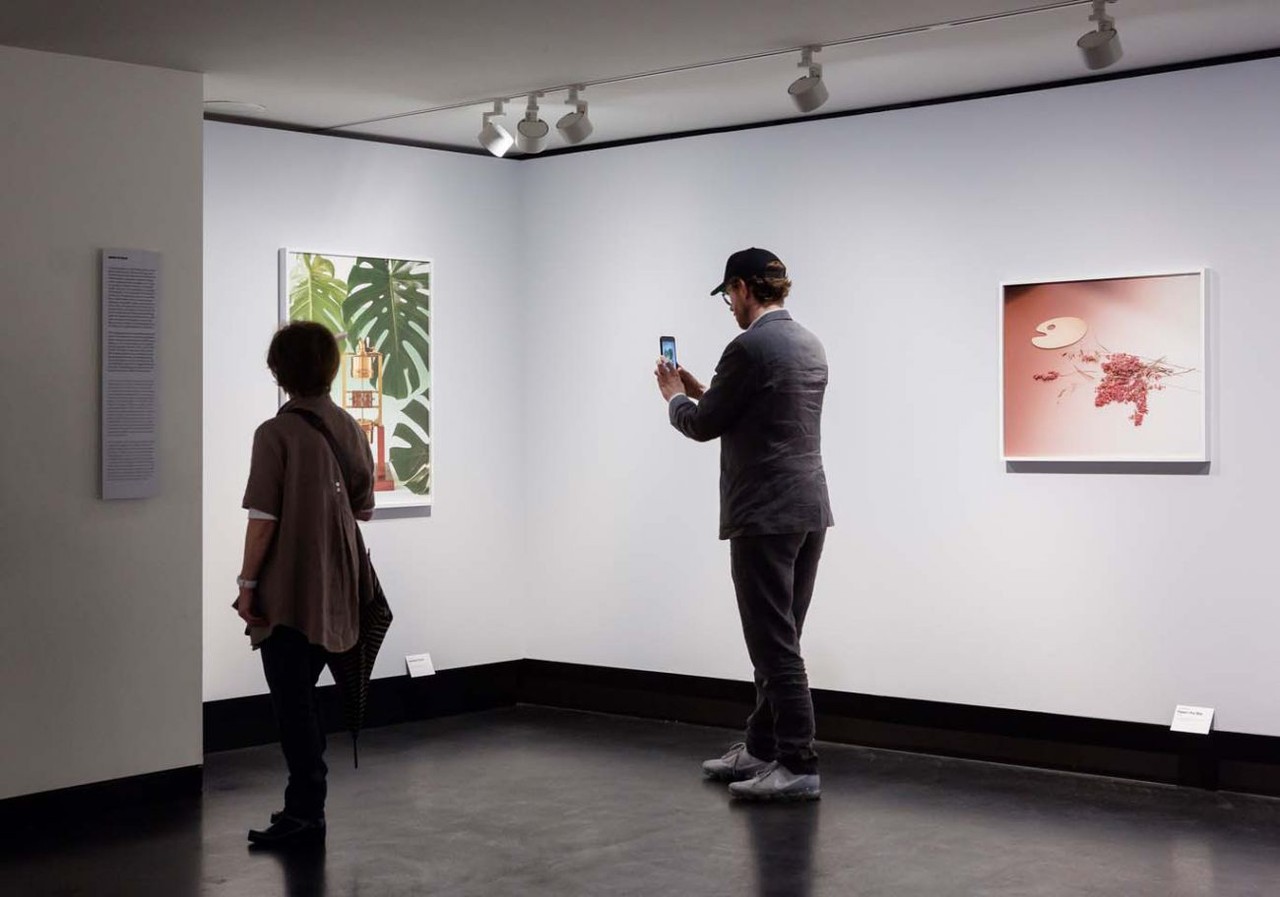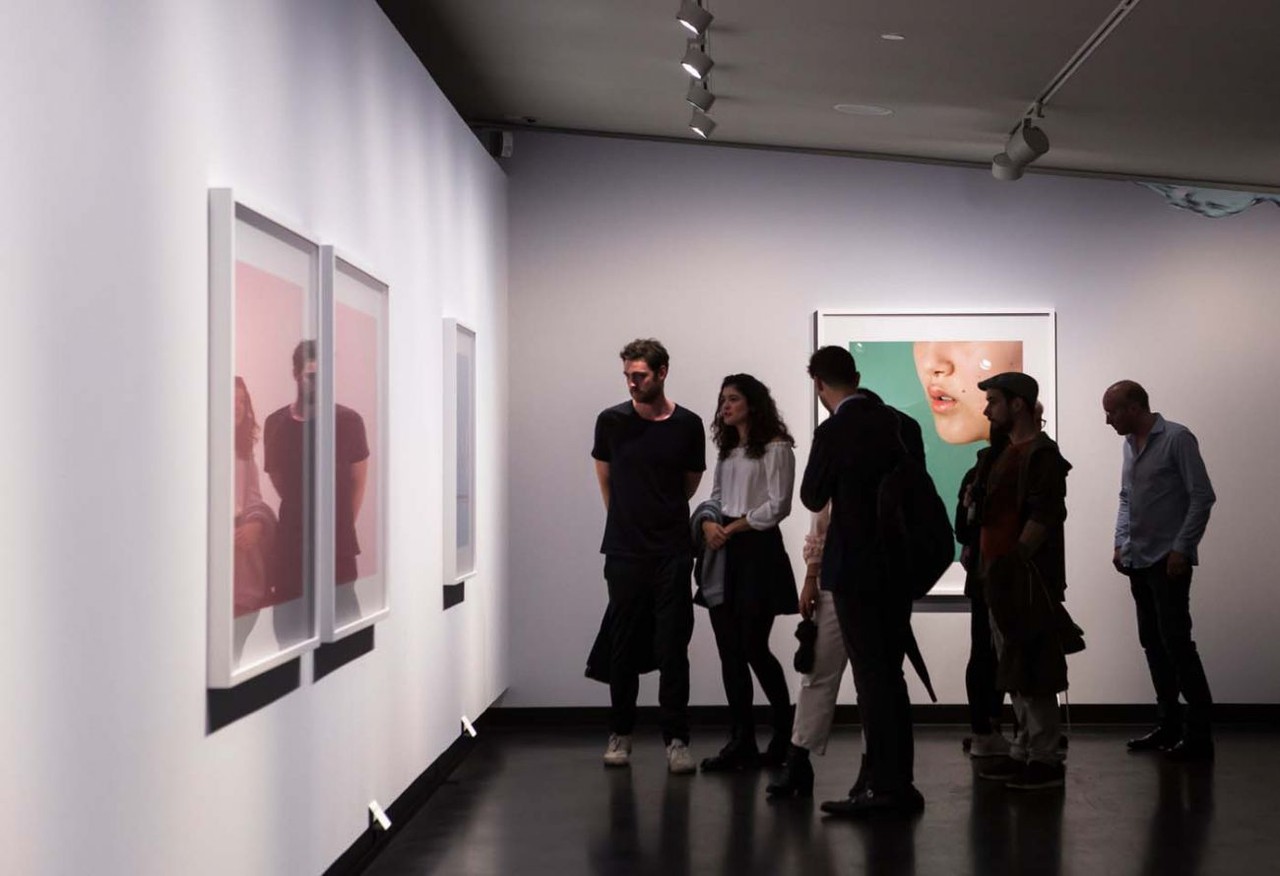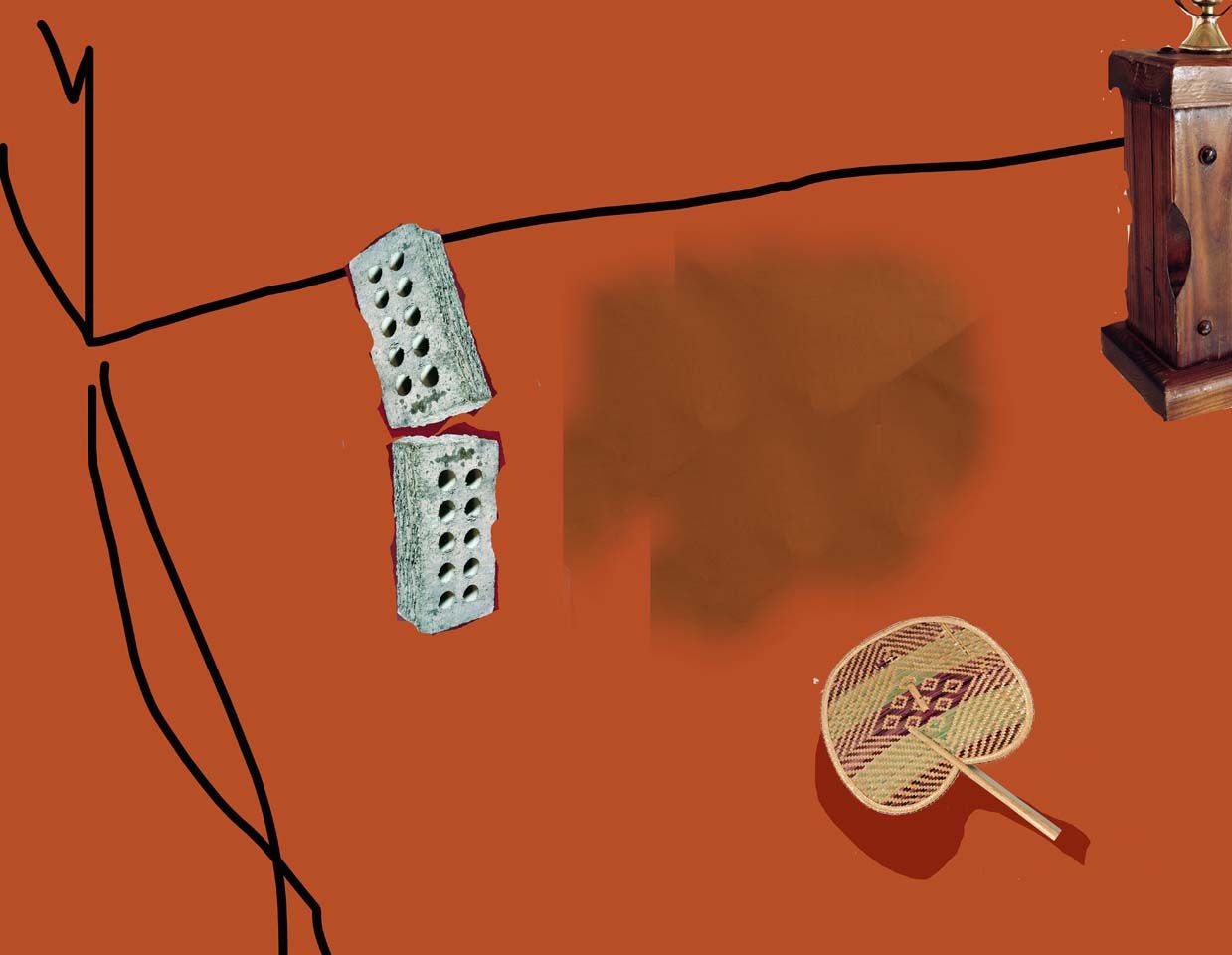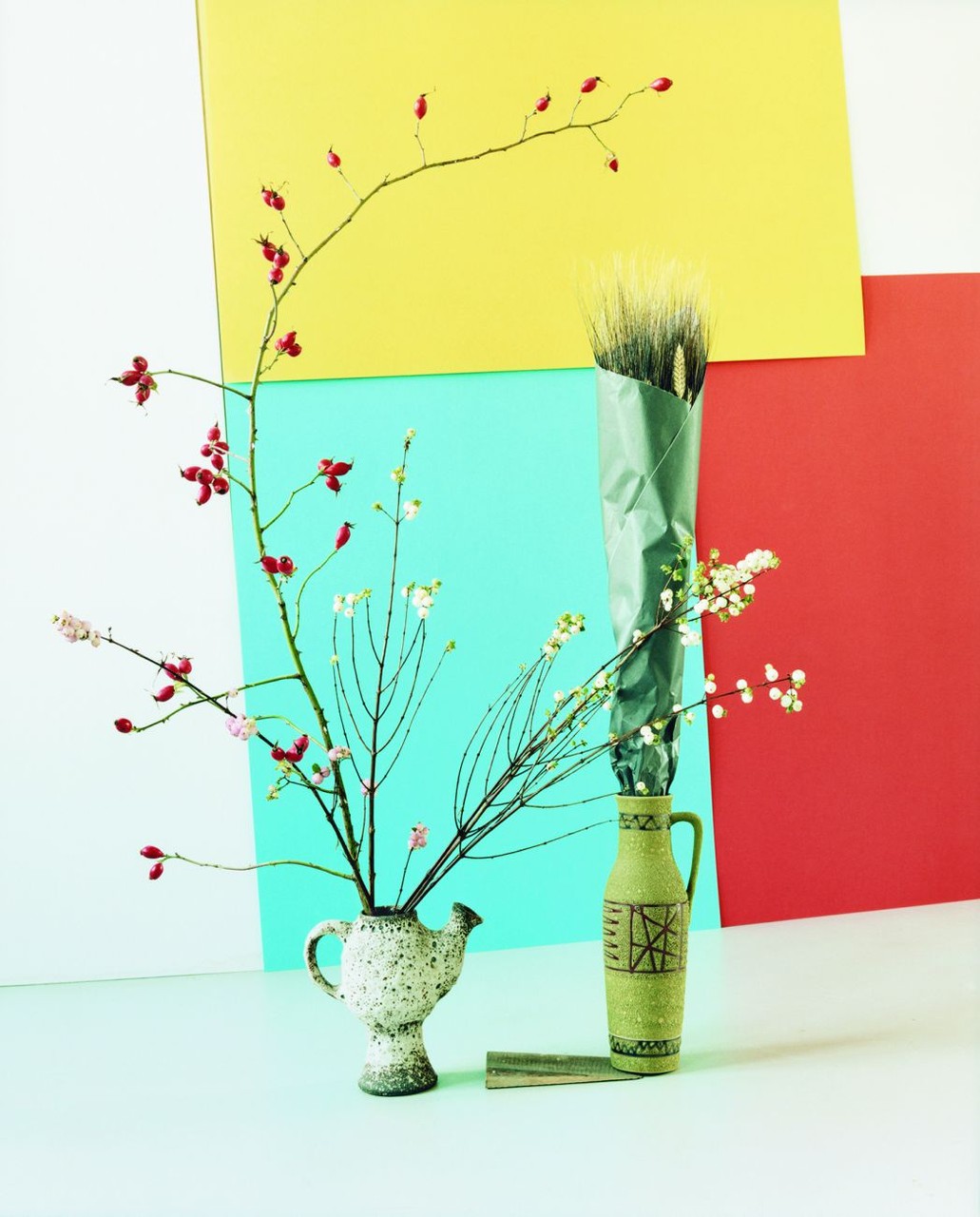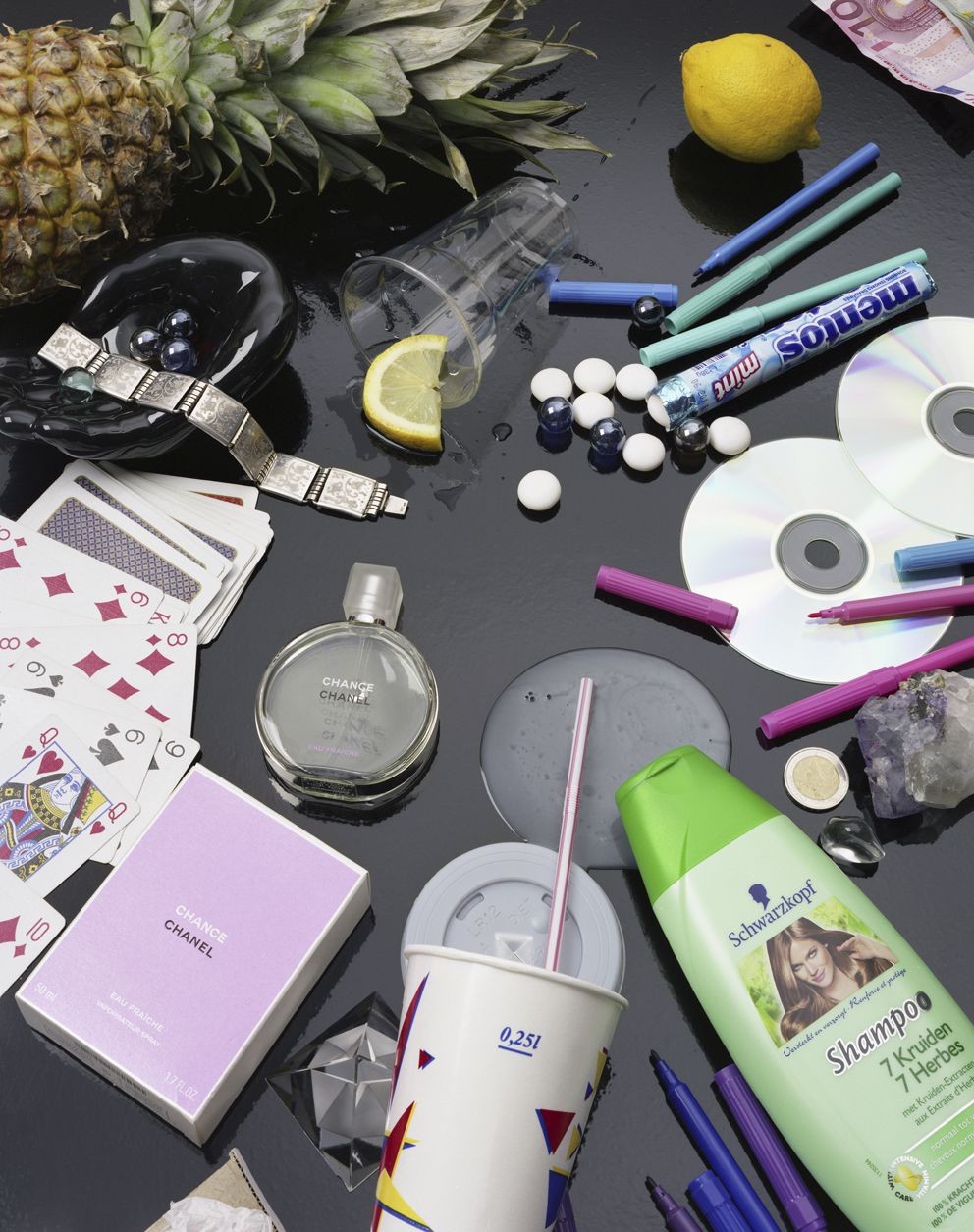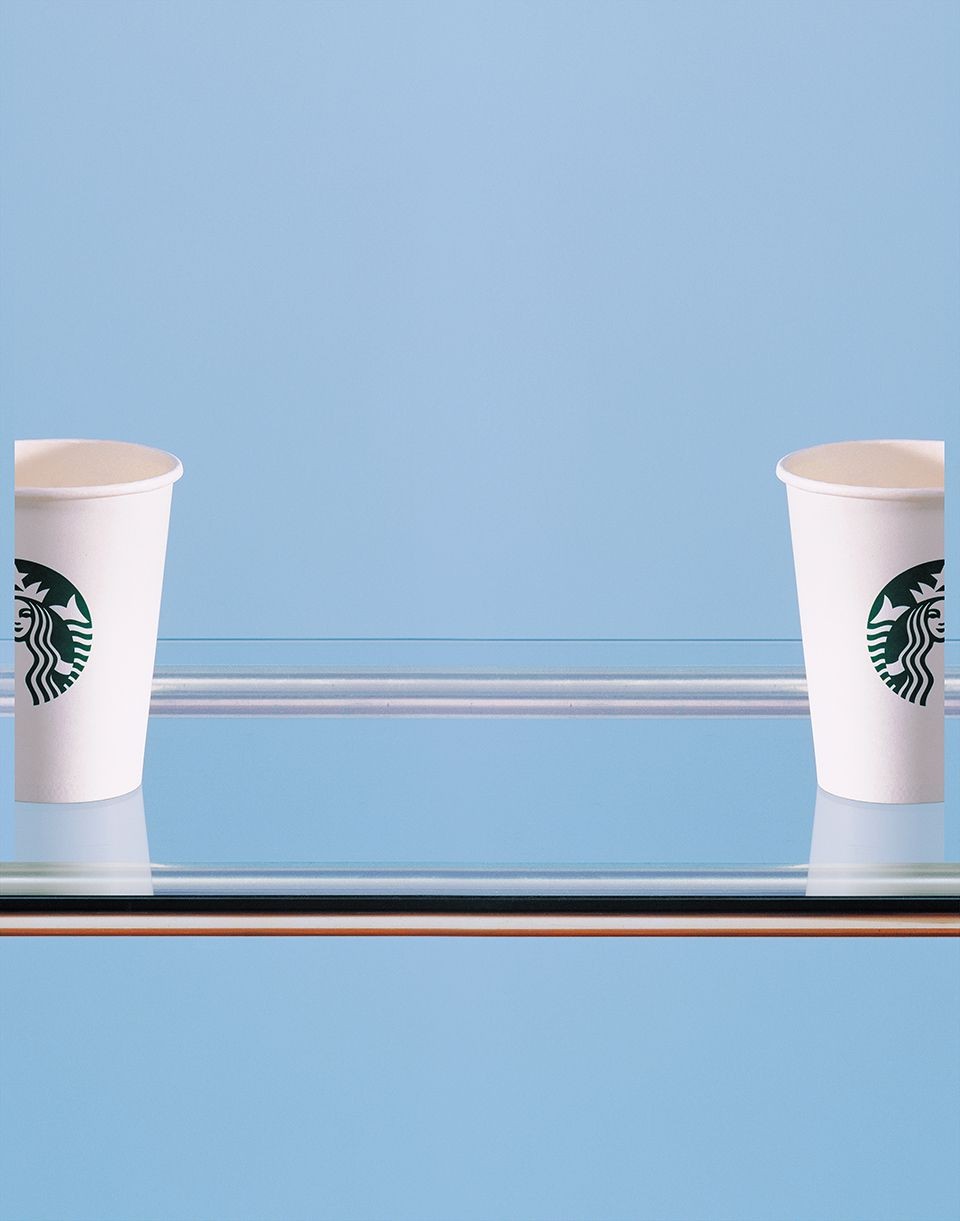Optical Illusions
Contemporary Still Life
13 Jul - 10 Oct 2017
OPTICAL ILLUSIONS
Contemporary Still Life
13 July – 10 October 2017
Set tables, elaborate floral arrangements, ostentatious compositions of books, trophies, glasses, and instruments count among the well-known motifs of classical still lifes and have for centuries been a canon of European art history. These once precious and symbolically charged objects have gradually given way to everyday objects. Meanwhile, perfume bottles, marbles, soft candy, hair shampoo, Starbucks cups, and pizza boxes are the objects of today’s still lifes.
The traditionally picturesque subject is currently experiencing a renaissance in contemporary photography, breaking down the distinctions between artistically arranged still life on the one hand and commercial product photography on the other.
Even artists of the 1920s and ’30s such as Man Ray, László Moholy-Nagy or Florence Henri experimented with the camera in a studio setting and created new forms of still life that were used as both artistic and advertising photos. Hans Hansen, whose exhibition entitled Still Life is being shown in dialogue with Optical Illusions . Contemporary Still Life, successfully continued this approach from the 1970s on as artistic product photography. Today, advertising and product photography belong to the visuals of everyday life in our digitized society, once again making the still life an attractive genre for young artists. In this way, artistic arrangements beyond the depicted subject are explored: new technical possibilities are explored, visual codes are reduced to absurdity, and our habits of thinking and perception are investigated in a time in which making and publishing pictures has become commonplace for nearly everyone.
The exhibition Optical Illusions . Contemporary Still Life curated by Ann-Christin Bertrand at C/O Berlin will present four artistic positions through the works of Lucas Blalock, Annette Kelm, Antje Peters, and Oskar Schmidt that do not just reassess the genre in a media sense, but rather also bring it up to date artistically. They all share an impressive precision and strict methodical formalization and use them to dissolve artistic conventions. By using both the rhetorics and aesthetics of everyday photography and at the same time questioning the mechanisms for the creation of photographic images, they open new spaces of thought and perception and readdress the differing conditions of digital image production and the aesthetic norms of photography.
The American photographer Lucas Blalock demonstrates the work process that goes on behind his photographs. Equally interested in both the history and the possibilities of photography, he starts with classical studio photography using an analogue large-format camera, and then scans the negatives and processes them digitally. Instead of disguising the digital processes, he leaves them perceivable, creating unique hybrid forms between traditional representations of objects and total alienation. His works thus reflect not only contemporary production methods of photographic images, but also seeing and the complexity of photographic reality.
Annette Kelm is also interested in approaching our optical perception. Drawing on the artistic conventions of advertising photography, like Elad Lassry or Roe Etheridge, her arrangements seem generally cold and calculated. Her photographs are created using the means of industrial and advertising photography. Instead of placing her objects on a neutral background, Annette Kelm often makes the background itself into the subject of the image. Whatever seems to stem from reality is then converted into a formally developed hyperreality, which then loses its legibility. But the strict orientation of formal criteria, the elimination of narrative elements, and the deliberate irritation caused by the insertion of collaged props thwarts the viewer. Her photographs thus become new spaces (of thought) that are balanced between precision and ambiguity, space and surface, and objectivity and abstraction.
Antje Peters’s works deliberately deconstruct the concept of perfect high-gloss photography: she paints expensive cosmetic products with felt-tip pens and tapes them into amorphous bundles with adhesive tape that she positions in the middle of the photograph, or she bunches colored pencils together with a Swatch wristwatch. A spilled glass of water, exotic fruits, perfume, marbles, currency, and CDs are arranged more chaotically than perfectly choreographed with soft candy, playing cards, and hair shampoo on a black background—she is always interested in the handicraft behind the perfect, smooth, and cold appearance of digital product photography. This artistic departure from known visual strategies in the advertising world is also being reflected in the presentation of her framed works at C/O Berlin, by consciously balancing between commercial window display and artistic installation.
Oskar Schmidt’s clear and highly reduced images are reminiscent of classic panel paintings. With mirrorlike surfaces, hidden objects, and isolated portraits, they are the result of careful arrangements. Schmidt often refers to icons of the history of painting and photography. At the same time, his images refer directly to so-called stock photography—flawless, mass-produced studio images that are available on image databases or from agencies without copyright or authorship and are free of charge. However, Schmidt is less concerned with the perfect reproduction of the original or the staging of the object and the figures themselves: he is more interested in photographic translation and artistic variation. His objective and minimalistic photographs bring up questions that go beyond mere reproduction in photography technique.
Contemporary Still Life
13 July – 10 October 2017
Set tables, elaborate floral arrangements, ostentatious compositions of books, trophies, glasses, and instruments count among the well-known motifs of classical still lifes and have for centuries been a canon of European art history. These once precious and symbolically charged objects have gradually given way to everyday objects. Meanwhile, perfume bottles, marbles, soft candy, hair shampoo, Starbucks cups, and pizza boxes are the objects of today’s still lifes.
The traditionally picturesque subject is currently experiencing a renaissance in contemporary photography, breaking down the distinctions between artistically arranged still life on the one hand and commercial product photography on the other.
Even artists of the 1920s and ’30s such as Man Ray, László Moholy-Nagy or Florence Henri experimented with the camera in a studio setting and created new forms of still life that were used as both artistic and advertising photos. Hans Hansen, whose exhibition entitled Still Life is being shown in dialogue with Optical Illusions . Contemporary Still Life, successfully continued this approach from the 1970s on as artistic product photography. Today, advertising and product photography belong to the visuals of everyday life in our digitized society, once again making the still life an attractive genre for young artists. In this way, artistic arrangements beyond the depicted subject are explored: new technical possibilities are explored, visual codes are reduced to absurdity, and our habits of thinking and perception are investigated in a time in which making and publishing pictures has become commonplace for nearly everyone.
The exhibition Optical Illusions . Contemporary Still Life curated by Ann-Christin Bertrand at C/O Berlin will present four artistic positions through the works of Lucas Blalock, Annette Kelm, Antje Peters, and Oskar Schmidt that do not just reassess the genre in a media sense, but rather also bring it up to date artistically. They all share an impressive precision and strict methodical formalization and use them to dissolve artistic conventions. By using both the rhetorics and aesthetics of everyday photography and at the same time questioning the mechanisms for the creation of photographic images, they open new spaces of thought and perception and readdress the differing conditions of digital image production and the aesthetic norms of photography.
The American photographer Lucas Blalock demonstrates the work process that goes on behind his photographs. Equally interested in both the history and the possibilities of photography, he starts with classical studio photography using an analogue large-format camera, and then scans the negatives and processes them digitally. Instead of disguising the digital processes, he leaves them perceivable, creating unique hybrid forms between traditional representations of objects and total alienation. His works thus reflect not only contemporary production methods of photographic images, but also seeing and the complexity of photographic reality.
Annette Kelm is also interested in approaching our optical perception. Drawing on the artistic conventions of advertising photography, like Elad Lassry or Roe Etheridge, her arrangements seem generally cold and calculated. Her photographs are created using the means of industrial and advertising photography. Instead of placing her objects on a neutral background, Annette Kelm often makes the background itself into the subject of the image. Whatever seems to stem from reality is then converted into a formally developed hyperreality, which then loses its legibility. But the strict orientation of formal criteria, the elimination of narrative elements, and the deliberate irritation caused by the insertion of collaged props thwarts the viewer. Her photographs thus become new spaces (of thought) that are balanced between precision and ambiguity, space and surface, and objectivity and abstraction.
Antje Peters’s works deliberately deconstruct the concept of perfect high-gloss photography: she paints expensive cosmetic products with felt-tip pens and tapes them into amorphous bundles with adhesive tape that she positions in the middle of the photograph, or she bunches colored pencils together with a Swatch wristwatch. A spilled glass of water, exotic fruits, perfume, marbles, currency, and CDs are arranged more chaotically than perfectly choreographed with soft candy, playing cards, and hair shampoo on a black background—she is always interested in the handicraft behind the perfect, smooth, and cold appearance of digital product photography. This artistic departure from known visual strategies in the advertising world is also being reflected in the presentation of her framed works at C/O Berlin, by consciously balancing between commercial window display and artistic installation.
Oskar Schmidt’s clear and highly reduced images are reminiscent of classic panel paintings. With mirrorlike surfaces, hidden objects, and isolated portraits, they are the result of careful arrangements. Schmidt often refers to icons of the history of painting and photography. At the same time, his images refer directly to so-called stock photography—flawless, mass-produced studio images that are available on image databases or from agencies without copyright or authorship and are free of charge. However, Schmidt is less concerned with the perfect reproduction of the original or the staging of the object and the figures themselves: he is more interested in photographic translation and artistic variation. His objective and minimalistic photographs bring up questions that go beyond mere reproduction in photography technique.


